b3groover
Well-known member
Some of you may remember a topic I started concerning building a power supply for some tube mic preamps (http://www.groupdiy.com/index.php?topic=1106). Well, the preamps have arrived!
They are IPC (International Projector Corp.) preamps, licensed by Western Electric. These are the early ones, without the RIAA equalization circuit built-in. They use a UTC HA100X as the input tranny into a 5879 tube to each half of a 12AT7 to a UTC A25 output.
I have a really bad schematic and I'm trying to get my hands on a better one (I know where it is and who has it... getting in touch with him is a different matter.) In the meantime, I tried to fill in the values as much as I could by back-tracing this afternoon. Here's what I came up with:
It's big, so here's a link...
http://www.organissimo.org/pub/IPC-preamp.gif
There are three capacitors which I could not decipher the value of because they are strange caps. Two are those weird mylar square ones and then there is one that looks like a resistor. I assume it is a capacitor because there are 11 caps in the schematic and before I counted this one I could only find 10 caps. Then I realized I had an extra "resistor" and thought, "Well, it must be a cap!" Here's a pic (the red arrow points to the offender):
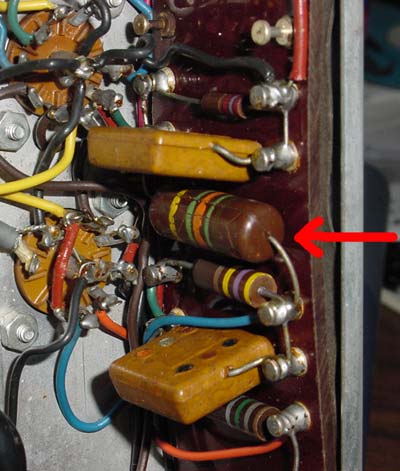
Is that baby indeed a cap? Anyone have any tips on how to get the value of these caps from their markings? Should I worry about the electrolytic cans (there are two)?
Here is a shot of the two preamps, with a CD in the background for scale.
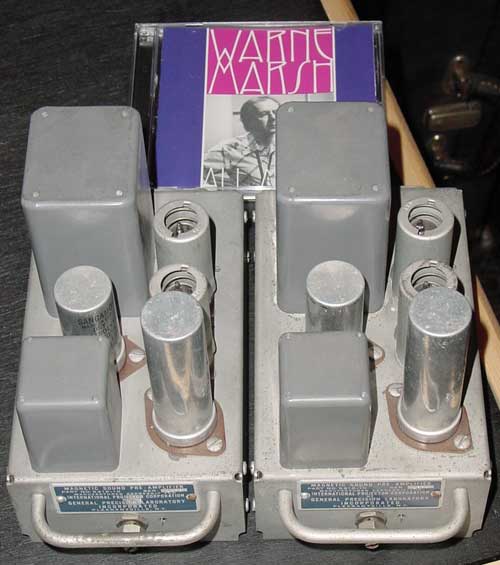
The front of the preamps, with gain control:
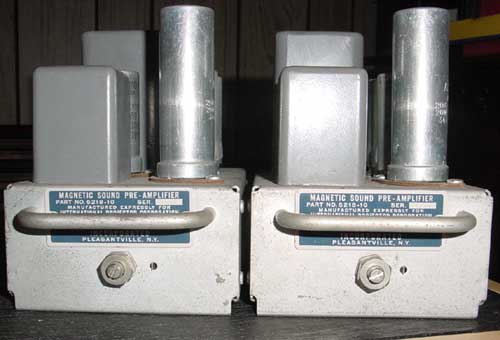
The guts:
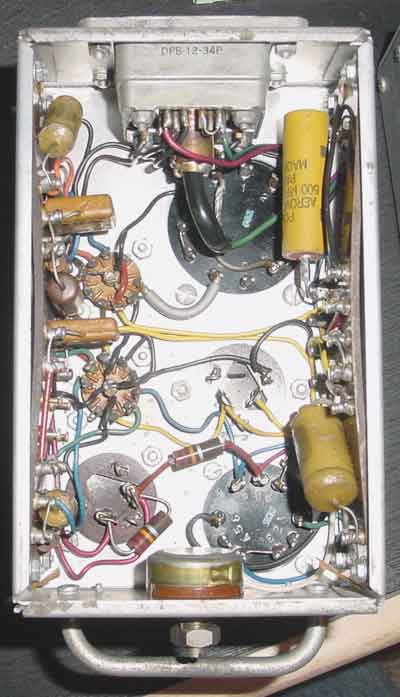
And finally, the strange Cannon connector:
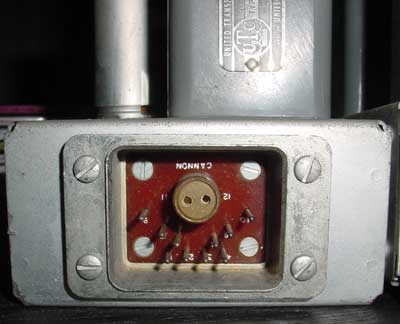
Does anybody know anything about this connector? It would be great to find some, but I'm not holding my breath. I checked the ITT/Cannon site and of course nothing like it exists anymore from what I could find.
Other than the obvious updating of the capacitors, anything else I should worry about? What type of caps would you guys suggest?
Oh, and I think these are wired for 600ohm line input right now. Take a look at the HA100X input tranny:
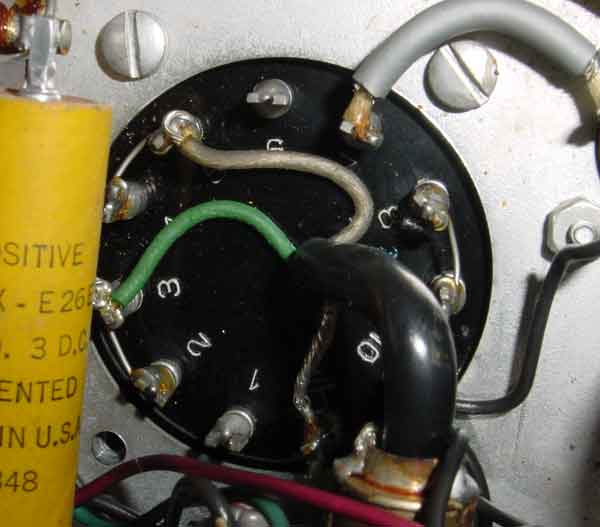
As you can see, the green wire goes to pin 3 of the tranny, which is hooked to pin 2. And the greyish wire goes to pin 5 which is jumpered to pin 4. According to this schematic of the LA2A which uses the same input transformer (http://members.nuvox.net/~zt.robgrow/circuits/la-2a/la-2acir.html, pins 3 and 4 should be jumped together with pins 2 and 5 acting as either side of a 250 ohm load, right?
Fun stuff! I'm still deciding on a power supply.
Here's a question, too. Can I use phantom with this thing?
They are IPC (International Projector Corp.) preamps, licensed by Western Electric. These are the early ones, without the RIAA equalization circuit built-in. They use a UTC HA100X as the input tranny into a 5879 tube to each half of a 12AT7 to a UTC A25 output.
I have a really bad schematic and I'm trying to get my hands on a better one (I know where it is and who has it... getting in touch with him is a different matter.) In the meantime, I tried to fill in the values as much as I could by back-tracing this afternoon. Here's what I came up with:
It's big, so here's a link...
http://www.organissimo.org/pub/IPC-preamp.gif
There are three capacitors which I could not decipher the value of because they are strange caps. Two are those weird mylar square ones and then there is one that looks like a resistor. I assume it is a capacitor because there are 11 caps in the schematic and before I counted this one I could only find 10 caps. Then I realized I had an extra "resistor" and thought, "Well, it must be a cap!" Here's a pic (the red arrow points to the offender):

Is that baby indeed a cap? Anyone have any tips on how to get the value of these caps from their markings? Should I worry about the electrolytic cans (there are two)?
Here is a shot of the two preamps, with a CD in the background for scale.

The front of the preamps, with gain control:

The guts:

And finally, the strange Cannon connector:

Does anybody know anything about this connector? It would be great to find some, but I'm not holding my breath. I checked the ITT/Cannon site and of course nothing like it exists anymore from what I could find.
Other than the obvious updating of the capacitors, anything else I should worry about? What type of caps would you guys suggest?
Oh, and I think these are wired for 600ohm line input right now. Take a look at the HA100X input tranny:

As you can see, the green wire goes to pin 3 of the tranny, which is hooked to pin 2. And the greyish wire goes to pin 5 which is jumpered to pin 4. According to this schematic of the LA2A which uses the same input transformer (http://members.nuvox.net/~zt.robgrow/circuits/la-2a/la-2acir.html, pins 3 and 4 should be jumped together with pins 2 and 5 acting as either side of a 250 ohm load, right?
Fun stuff! I'm still deciding on a power supply.
Here's a question, too. Can I use phantom with this thing?





